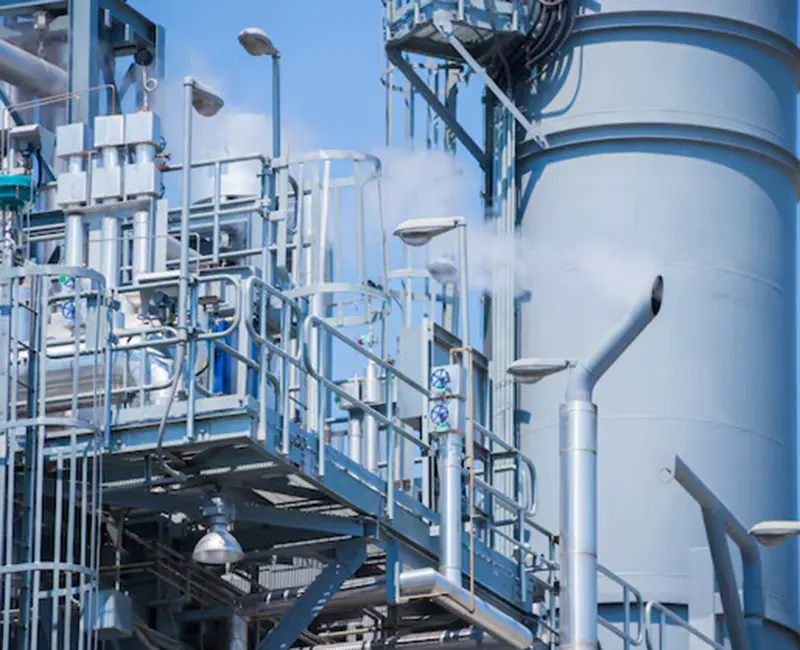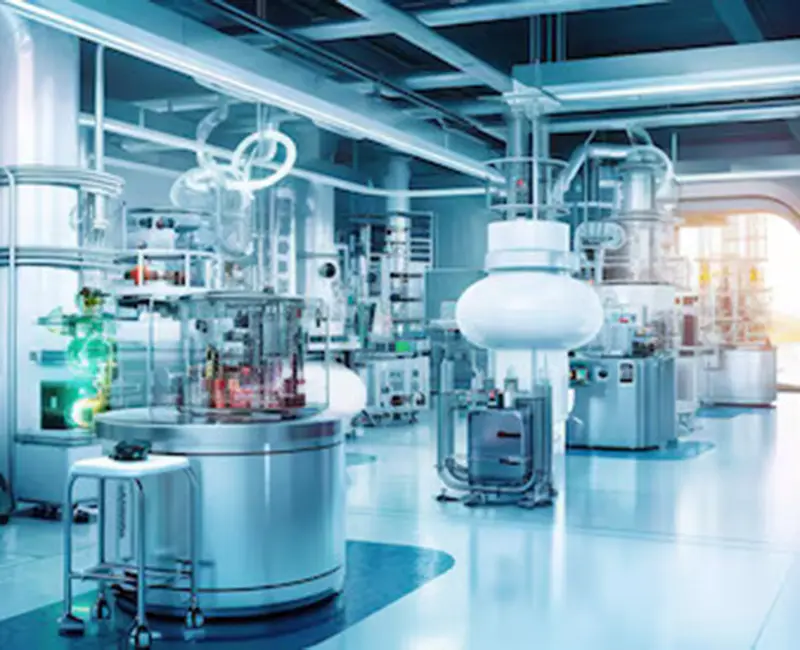What Are the Benefits of Using Copper Tube Copper Fin Heat Exchangers in HVAC Systems?

I’ve seen how copper tube copper fin heat exchangers transform HVAC systems. Their high thermal conductivity, around 400 W/m·K, ensures efficient heat transfer, outperforming other materials like aluminum. These exchangers resist corrosion in humid and salty environments, making them durable and reliable. In residential, commercial, and industrial sectors, their adoption grows due to energy-efficient designs and green building standards. Ningbo Senjun New Materials Co., Ltd. excels in producing these exchangers, supporting applications like refrigerators, dehumidifiers, and ice makers.
Key Takeaways
- Copper tube copper fin heat exchangers move heat very well. This is because copper conducts heat quickly, helping HVAC systems work better.
- These exchangers are strong and do not rust easily. This means they last longer and need less fixing.
- Copper is good for the environment. It can be recycled and works with eco-friendly refrigerants, making HVAC systems more sustainable.
Heat Transfer Efficiency of Copper Tube Copper Fin Heat Exchangers

High Thermal Conductivity of Copper
I’ve always been impressed by how copper stands out in heat transfer applications. Its thermal conductivity is unmatched compared to other materials commonly used in heat exchangers. To put this into perspective, here’s a quick comparison:
| Material | Thermal Conductivity (Btu/(hr-ft-F)) |
|---|---|
| Copper | 231 |
| Aluminum | 145 (60% less than copper) |
| Stainless Steel | 8.5 (almost 30 times less than copper) |
This table clearly shows why copper is the preferred choice for heat exchangers. Its ability to transfer heat efficiently ensures that HVAC systems operate at peak performance. Whether it’s cooling or heating, copper delivers consistent results, making it an essential component in modern HVAC designs.
Improved HVAC System Performance
Copper Tube Copper Fin Heat Exchangers significantly enhance the performance of HVAC systems. I’ve seen how their design optimizes heat transfer, reducing energy consumption and improving overall efficiency. Copper’s high thermal conductivity plays a crucial role here, but its benefits don’t stop there.
- Tankless gas water heaters rely on copper heat exchangers for their superior heat transfer capabilities.
- Air-source heat pumps use copper in their coils and manifolds to ensure efficient operation.
- Geothermal heat pump systems utilize buried copper tubing for effective heat exchange, showcasing copper’s versatility.
These applications highlight why copper is indispensable in HVAC systems. Ningbo Senjun New Materials Co., Ltd. takes this a step further by producing high-quality copper aluminum fin heat exchangers. Their products cater to various applications, from refrigerators to dehumidifiers, ensuring reliable performance across the board.
Durability and Corrosion Resistance
Copper's Resistance to Corrosion in Harsh Environments
I’ve always admired copper for its remarkable resistance to corrosion, even in the harshest environments. This property makes it an ideal material for Copper Tube Copper Fin Heat Exchangers. Copper corrodes at negligible rates in unpolluted air and water, which is why it has been used for centuries in various applications. In fact, copper artifacts buried underground for thousands of years have been found in pristine condition. This durability extends to copper alloys, which resist many saline and alkaline solutions. For example, copper roofing in rural areas corrodes less than 0.4 mm over 200 years. This level of resilience ensures that HVAC systems equipped with copper components can withstand challenging conditions, such as high humidity or exposure to saltwater.
Ningbo Senjun New Materials Co., Ltd. leverages these properties to produce high-quality copper aluminum fin heat exchangers. Their products are designed to perform reliably in demanding environments, from dehumidifiers to medical ultra-low temperature refrigerators.
Longevity and Reduced Maintenance Needs
Copper’s durability translates directly into longer lifespans for HVAC components. I’ve seen how Copper Tube Copper Fin Heat Exchangers maintain their efficiency and reliability even in extreme conditions. Industry professionals often highlight their ability to perform consistently without frequent repairs. Case studies and customer testimonials frequently emphasize reduced maintenance requirements and improved performance.
The cost-effectiveness of these heat exchangers becomes evident when considering their low maintenance needs. Simple cleaning methods are usually sufficient to keep them in optimal condition. Compared to other materials, copper’s resistance to wear and corrosion significantly reduces the frequency of repairs or replacements. This means businesses save money over time while enjoying reliable HVAC performance.
Ningbo Senjun New Materials Co., Ltd. continues to innovate in this space, offering durable and efficient solutions for a wide range of applications, including refrigerators, ice makers, and display cabinets.
Cost-Effectiveness and Energy Savings
Long-Term Financial Benefits
I’ve noticed that Copper Tube Copper Fin Heat Exchangers offer significant financial advantages over time. Their durability ensures a long service life, reducing the need for frequent replacements. This longevity directly translates into cost savings. For instance, copper’s resistance to corrosion minimizes maintenance expenses. I’ve seen how businesses benefit from fewer repairs and longer service intervals, which keeps operational costs low.
Another key advantage lies in the use of small-diameter copper tubes. These tubes reduce the amount of refrigerant required, which not only lowers costs but also aligns with sustainable practices. Additionally, copper’s high thermal conductivity ensures efficient heat transfer, leading to reduced energy consumption. Over time, this efficiency results in smaller electricity bills, making copper-based heat exchangers a smart investment.
Ningbo Senjun New Materials Co., Ltd. excels in producing these high-quality heat exchangers. Their products, designed for applications like refrigerators and dehumidifiers, deliver reliable performance while offering long-term financial benefits.
Energy Efficiency in HVAC Systems
Energy efficiency is another area where Copper Tube Copper Fin Heat Exchangers shine. Copper’s superior thermal conductivity, at 231 Btu/(hr-ft-F), ensures efficient heat transfer. This efficiency reduces energy consumption, which I’ve seen lead to lower operating costs for HVAC systems. To illustrate this, here’s a quick comparison of thermal conductivity among common metals:
| Metal | Thermal Conductivity (Btu/(hr-ft-F)) |
|---|---|
| Silver | 247.87 |
| Copper | 231 |
| Aluminum | 136 |
| Stainless Steel | 8.1 |
This table highlights why copper is the preferred choice for heat exchangers. Smaller-diameter copper tubes also contribute to energy savings by reducing material usage and improving system efficiency. Copper fins enhance the overall heat transfer rate, further lowering energy consumption.
By choosing copper-based solutions from Ningbo Senjun New Materials Co., Ltd., businesses can achieve both energy efficiency and cost savings. Their expertise in producing copper aluminum fin heat exchangers ensures optimal performance for HVAC systems.
Environmental and Sustainability Benefits

Eco-Friendly Properties of Copper
I’ve always appreciated copper for its eco-friendly qualities. It’s one of the few materials that is both recyclable and biodegradable, making it a sustainable choice for HVAC systems. Here are some key environmental benefits of copper:
- Copper can be recycled indefinitely without losing its properties, reducing the need for mining new resources.
- Its durability ensures a longer lifespan for HVAC components, minimizing waste.
- Copper’s efficiency in heat transfer supports sustainable practices by reducing energy consumption.
These qualities make copper an excellent material for environmentally conscious HVAC designs. Ningbo Senjun New Materials Co., Ltd. incorporates these benefits into their copper aluminum fin heat exchangers, ensuring their products align with modern sustainability goals.
Compatibility with Green Refrigerants
I’ve noticed how Copper Tube Copper Fin Heat Exchangers play a vital role in supporting global sustainability efforts. Their design enhances energy efficiency, which directly reduces greenhouse gas emissions. Copper’s high thermal conductivity and corrosion resistance optimize heating and cooling processes, making HVAC systems more sustainable.
Another significant advantage is their compatibility with green refrigerants. These refrigerants have a low global warming potential (GWP), and copper’s properties make it an ideal material for systems using them. By facilitating the use of eco-friendly refrigerants, copper-based heat exchangers contribute to reducing the environmental impact of HVAC systems.
Ningbo Senjun New Materials Co., Ltd. excels in producing these advanced heat exchangers. Their products not only deliver exceptional performance but also promote sustainable practices across various applications, from dehumidifiers to medical refrigeration systems.
Versatility and Ease of Installation
Flexible Applications in HVAC Systems
I’ve always admired how Copper Tube Copper Fin Heat Exchangers adapt to a wide range of HVAC applications. Their design makes them suitable for both residential and industrial systems. For example, they excel in air conditioning and heating systems in buildings and motor vehicles. These exchangers also play a vital role in household air-conditioning units and large central air-conditioning systems. Their ability to efficiently transfer heat between refrigerants and air ensures optimal performance in diverse environments.
The versatility of these heat exchangers stems from their unique design features. Copper’s high thermal conductivity enhances heat transfer, while its corrosion resistance ensures durability in humid conditions. Additionally, copper’s antimicrobial properties prevent bacteria and mold growth, which is essential for maintaining hygiene in HVAC systems. I’ve seen how their malleability allows for custom designs, making them ideal for specialized applications. Ningbo Senjun New Materials Co., Ltd. leverages these features to produce high-quality copper aluminum fin heat exchangers for various uses, including refrigerators, dehumidifiers, and medical refrigeration systems.
Lightweight Design for Simplified Installation
The lightweight nature of Copper Tube Copper Fin Heat Exchangers simplifies installation processes significantly. I’ve noticed how this feature enhances transportation efficiency, reducing energy consumption and costs. Technicians often find the reduced weight of aluminum fins makes handling easier. This design also allows for simpler positioning in tight spaces, which is particularly beneficial in industries like refrigeration and HVAC.
The lightweight design improves overall construction efficiency. It reduces the physical effort required during installation and minimizes the need for additional human resources. I’ve seen how this feature shortens project timelines, making it a practical choice for time-sensitive projects. Ningbo Senjun New Materials Co., Ltd. incorporates these advantages into their products, ensuring efficient and hassle-free installation for a variety of applications.
Copper Tube Copper Fin Heat Exchangers offer unmatched benefits for HVAC systems. Their high thermal conductivity ensures efficient heat transfer, while corrosion resistance and durability reduce maintenance needs. These exchangers also support sustainability through recyclability and compatibility with eco-friendly refrigerants.
Choosing products from Ningbo Senjun New Materials Co., Ltd. guarantees reliable performance. Their expertise in producing copper aluminum fin heat exchangers ensures cost-effective, durable, and versatile solutions for HVAC applications. From refrigerators to dehumidifiers, their products meet diverse needs with exceptional quality.
FAQ
What makes copper tube copper fin heat exchangers better than aluminum ones?
I’ve found copper offers superior thermal conductivity, durability, and corrosion resistance. These qualities ensure better performance and longer lifespan compared to aluminum alternatives.
Are copper tube copper fin heat exchangers suitable for all HVAC systems?
Yes, they work well in residential, commercial, and industrial HVAC systems. Their versatility and efficiency make them ideal for diverse applications, including refrigeration and dehumidification.
Why choose Ningbo Senjun New Materials Co., Ltd. for heat exchangers?
Ningbo Senjun specializes in producing high-quality copper aluminum fin heat exchangers. Their expertise ensures reliable, efficient solutions for refrigerators, freezers, ice makers, and more.


















